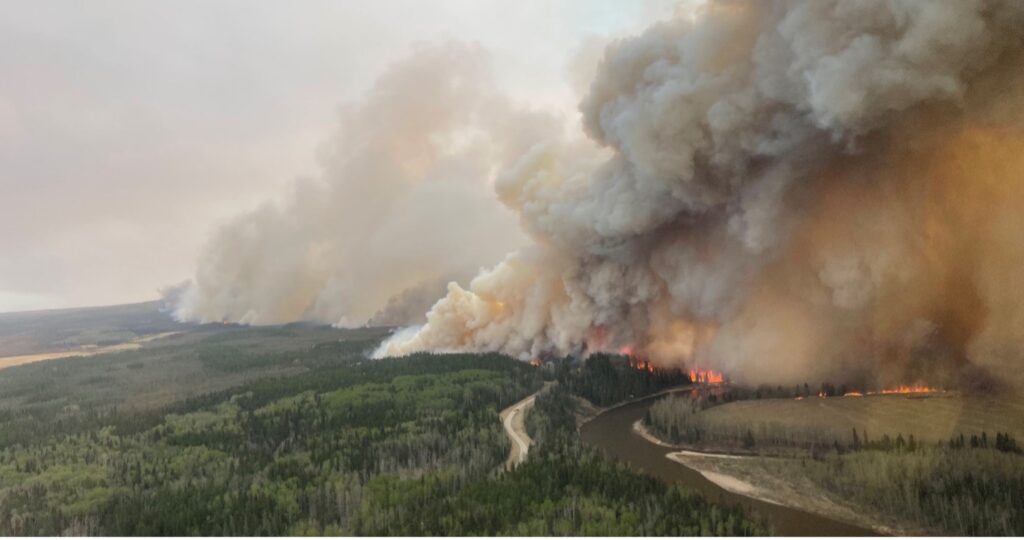
News
Forestry
Opinion: Canada’s present and future wildfire threat demands more sustainable forest management
June 29, 2023 By By Derek Nighbor and John Desjarlais
 Wildfire EWF-031 located southeast of Edson, Alta. Image provided by the Government of Alberta.
Wildfire EWF-031 located southeast of Edson, Alta. Image provided by the Government of Alberta. It may only be June, but Canada is facing one of its most extreme wildfire seasons in history. Already, over seven times the forested land base that Canada’s foresters sustainably harvest on an annual basis has been scorched by fire.
A 2021 study by the Canadian Forest Service, suggests the threat to communities is expected to increase in the future. It also highlights that remote First Nations communities made up almost one-third of all evacuees and evacuation events in recent decades and will be at the forefront of the impact in the future years.
To chart our path forward, it is important to recognize that 60 percent of the trees in Canada’s boreal forest are in the 61-140 year age range. As trees reach maturity, they lose their ability to sequester carbon and are at greater risk of succumbing to the effects of drought, windstorms, pests, and fire. And as our climate continues to change, the severity of these disturbances will continue to escalate.
Simply protecting forests across a natural fire-prone region like the boreal is not an effective climate strategy. Nor is it an effective public safety plan. This is further supported by findings of Parks Canada that show many of Canada’s parks are now net carbon sources due to worsening natural disturbances.
Indigenous leadership offers a deep understanding of how the forest evolves and how it can be managed in a way that is both environmentally and economically sustainable. For centuries, Indigenous communities have renewed and regenerated the forest, preserving biodiversity, and mitigating the impacts of wildfire by removing excess fuel (dead or decaying wood that can be kindling for the next fire) through cultural burns. These practices in turn make forests less prone to other disturbances like insects and disease.
In Finland, Norway and Sweden a January 2022 publication by the International Boreal Forest Researchers Association (IBFRA) shows how an active approach to forest management is paying dividends. Fire and natural disturbance levels are 50-60 times less than they are in Canada. Furthermore, Scandinavians are getting 5 to 7 times the amount of wood out of the same sized plot of land compared to Canada to produce low carbon products for domestic infrastructure, household, and bioenergy needs.
Much of the wood harvested to reduce fuel in the forest may be of insufficient quality for milling into lumber or other solid wood products. However, it presents an opportunity for bioenergy which is already Canada’s second-largest source of renewable energy, provides five times the energy of wind and solar combined, and is the largest source of renewable energy in half the provinces. The CHAR Technologies-Lake Nipigon Forest Management Inc. partnership is a great example of what is possible. The proposed renewable natural gas (RNG) and biocoal plant in the Lake Nipigon Ontario area, will maximize the value of low-grade wood and help produce a steady, yearly revenue stream for Indigenous communities in the area.
There is a way to ensure our forests remain both productive and sustainable in Canada, and it’s not a choice between the environment and forest management. The two go together. We need to embrace more active management of our forests, collaboration with Indigenous communities, and look to lessons learned from the Nordic countries to help get us there. In the face of a changing climate, active management of our forests is more important than ever.
Derek Nighbor is the president and CEO of the Forest Products Association of Canada (FPAC). John Desjarlais is the executive director of Indigenous Resource Network (IRN).
Print this page